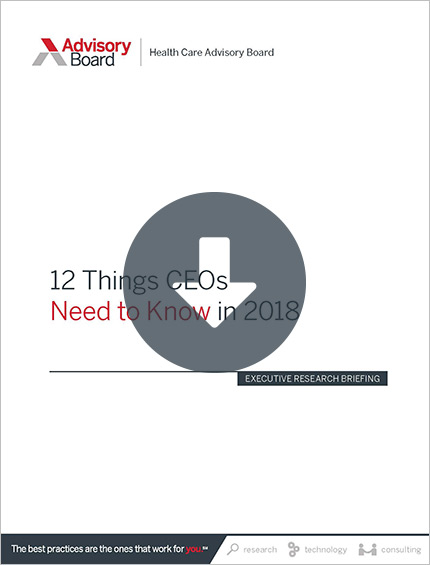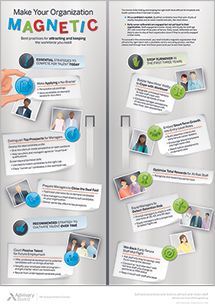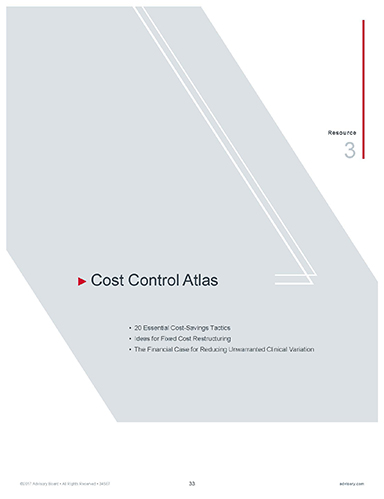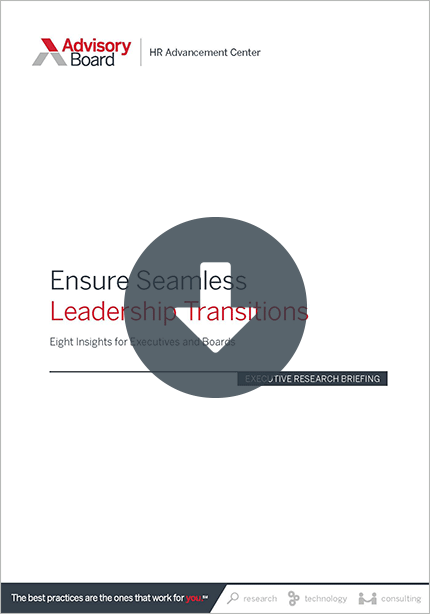All CEOs have a public persona: the way they present themselves on corporate websites, in public speeches, and on earnings calls. But what are they really like?
Friends and colleagues know that as our firm's managing partner, I'm privileged to spend a disproportionate amount of my time working directly with health system CEOs across a variety of settings. So I get inundated with questions. All the time. Particularly around these CEOs' path to the corner office. How did they ascend to the top job? Sheer, unadulterated ambition? A "servant's heart" mentality? What are they like in private, away from public scrutiny? What motivates them?
These questions reflect an abiding curiosity to truly understand the men and women who set the direction of our industry. And with the recent spate of mega-mergers, both horizontal and vertical, and the creation of multiple $25B+ health systems, curiosity about the leaders who helm these Fortune 500-sized enterprises has never been higher.
So a few years ago, we, including our former editor Dan Diamond, came up with a deceptively simple idea: to sit down and have totally free-flowing, exploratory, unredacted discussions with these leaders.
One animating principle: My ambition was to move beyond the website clichés. I wanted to avoid a recitation of the health system strategic plan. I wanted an authentic discussion of how the CEO is intentionally guiding strategy amid escalating (traditional and non-traditional) competition, his or her personal journey to the CEO chair, and his or her perspective on some of the predominant health care narratives of the day (spiraling drug costs, increasing regulatory uncertainty, proliferation of high-deductible health plans, etc.). And I wanted to discover what makes them tick—what they care about, what they've sacrificed, what they are most grateful for, and who are their most profound teachers and mentors.
The published versions of these Q&As are about 4,000 words, condensed from one-on-one conversations that range from two to four hours, averaging about 20,000 transcribed words. After 50 of these conversations—and after more than one million words—I thought I'd share some of the big themes and takeaways—including some colorful anecdotes and rather unexpected insights that previously ended up on the cutting room floor.
There's no 'traditional' route to the CEO role anymore
Sure, everyone wants to unlock the "CEO code." Is it easier to transition from COO to CEO than to come from the CFO's office? Is it a prerequisite that health system CEOs first run hospitals as a COO, or is immersion in the physician and ambulatory sides of the business sufficient? A variety of experience is accretive, but how much is too much (and suggests an inability to focus)? What are the predictive, early career qualities that foreshadow later C-suite success? There's an understandable impulse to try and figure this out—but there are no simple answers.
We of course have the traditional stereotype of the successful CEO: a six-foot-tall white male with a pedigreed university degree, unflappable under pressure and a Reagan-esque communicator, with a straight shot to the CEO's corner office (usually after running all the hospitals in the system). Happily, this outmoded trope is all but discarded, as evidenced by the rich variety of backgrounds of our first 50 CEO conversations. Not all of our men and women CEOs are charismatic, outgoing extroverts. Many are quiet, contemplative, decidedly un-flamboyant "servant-leaders." Others are data and policy wonks. There just isn't a prototype.
And such a rich, colorful, and heterogeneous set of backgrounds as well. Michael Dowling of Northwell grew up in Ireland with a dirt floor and no electricity. Kevin Lofton of CHI was a taxi driver in the Bronx. Lloyd Dean of Dignity was a pharmaceutical sales rep and teacher. Mary Brainerd of HealthPartners was a philosophy major and later worked in insurance. James Hereford of Fairview was a high school basketball coach and mathematician. Curiously, more of the 50 CEOs grew up or worked on a farm—Hereford, Dowling, Tom Zenty of University Hospitals, and a couple others—than attended an Ivy League school. Within the health system, some came up from the finance side, some from the operations side, and some from the outside.
My take? Becoming CEO isn't about your height or weight or gender or skin color or Ivy League-pedigreed diploma. It is far less deterministic. It turns out it is really about the behaviors one can choose, control, and create.
Even so, there's one characteristic that really does seem to shape CEOs' paths: The female CEOs I've spoken with describe distinctly different experiences than their male counterparts. Penny Wheeler of Allina Health was told that she was "too empathetic." Marna Borgstrom of Yale admitted that early in her career, she tried to be the "me" that she thought would impress others—and wished she hadn't. Sandra Bruce of Presence Health attended her first board meeting as CEO, and someone who didn't realize she was the chief executive asked her to fetch coffee (!). Fortunately, it seems these discouraging accounts are becoming rarer and rarer in today's climate.
Lastly, I'm struck by just how difficult this job is. As I looked back through this list of 50 conversations, I started taking a mental tally—and then a real tally—of how many of these leaders have since moved on from their posts. Let's remember that these 50 are some of the most powerful and influential leaders in our industry. But nearly 40% of them have either retired, resigned, been let go, taken a new job, or have had their role modified due to a merger. This realization serves as proof of just how hard the job of health system CEO is—and how taxing (although certainly, in many cases, rewarding) this job can be. These CEOs aren't manufacturing widgets; they are responsible for the care of huge populations of Americans.
And while there is joy in the arrival of a new baby, the notification that an organ is available for transplant, or the confirmation that a patient's cancer is in remission, these individuals carry the weight of so many other less-than-joyful diagnoses and outcomes. It's a job that requires the perspective, compassion, and tenacity born from the varied paths and experiences that I've learned about across my 50 conversations. And the 60% that remain in their CEO roles are not naïve about the road ahead. Between competition and policy changes, these leaders will have their hands full for the foreseeable future.
The 6 common traits of health system CEOs
The 50 CEOs may have come from vastly divergent personal and professional backgrounds, but in our discussions I've also discerned that they share six common traits.
First, they all exhibit a characteristic I call "aggressive learning." They're voracious learners who love to deconstruct an idea, tactic, or strategy—to get underneath it and figure out the "applied science" of it. Hereford from Fairview actually used the phrase "aggressive learner" in our conversation. Terry Shaw from Adventist talked about "taking on other people's bigger and bigger problems." Lloyd Dean was recently quoted as saying that "[he'll] go anywhere there is a best practice and try to learn from others." Toby Cosgrove advised us to "steal shamelessly" the ideas of others, and no matter where I see him, he always asks me, "What do you think the Cleveland Clinic should be doing differently?" (And he genuinely wants to hear the answer.)
These CEOs are questioners. Tinkerers. (In fact, George Brown of Legacy originally thought his calling was to become a mechanical engineer because his favorite thing to do as a child was to take things apart and put them back together.) They may differ in how they embody aggressive learning—some are interrogators (woe betide the subordinate unprepared with a thoughtful answer), others are collaborators—but they all share this core trait of restless learning.
Second, they've found an elusive "psychic equilibrium" between being high-ego and being humble enough to learn. Steve Lipstein of BJC recalls the time he spent working as a nursing unit clerk at Emory and how much he learned from two veteran nurses—noting that "these nurses could solve any problem, even the ones that I caused." These CEOs have enough confidence to take risks and drive the enterprise forward, but enough humility to know they're not omniscient and have to ask trusted advisors for guidance and teaching. That's a hard thing to pull off, not just as a system CEO, but in life (as I discover daily with my three kids).
Harvard Business Review this past June published an illuminating analysis of the traits of successful CEOs. One counterintuitive finding was that although "high confidence" more than doubles a candidate's chances of being chosen as CEO, it provides no advantage in performance on the job.
From my conversations with CEOs, I think the successful ones understand both sides of that dynamic: They're confident people, or else they wouldn't be in their current role—but they also recognize the limitations of confidence and the importance of balancing certainty and humility.
Third, these CEOs prioritized the "process" over the "destination." Very few—surprisingly few—had a prefabricated vision of their future. Tom Zenty of University Hospitals was unique in having decided at the precocious age of 15 that he wanted to be a hospital CEO. Instead, most of our CEOs sought out increasingly complex assignments, often in very non-linear ways, and fully immersed themselves in their work. They mastered the lessons and made the most of whatever career waystation they were on.
For instance, Rick Gilfillan from Trinity transitioned from a primary care practice to running a health plan, then to leading CMMI as its inaugural director, then to CEO of a now-$16B health system.
Bill Roper from UNC noted that his career was decidedly not a "carefully planned" one, having spent time in both the Bush and Reagan administrations, the CDC, and Prudential Health Care before moving into academia as the dean of the School of Public Health at UNC.
Even the Advisory Board's own CEO, Robert Musslewhite, had a non-linear path—he clerked for a district court judge in Dallas post-law school and then transitioned to consulting at McKinsey before moving to a strategy role at the Advisory Board. (And in our soon-to-be-published interview, Robert reflected that when he accepted the strategy job, he didn't take it with the intention of eventually moving to the corner office.)
Sure, in retrospect, these career choices seem like they were systematically "checking the box" for various skills and competencies, but in the moment it was more serendipity than advance planning—and these CEOs extracted the maximum insight from each experience.
Fourth, these CEOs actively jump into traffic. They want the hard assignment, the insoluble problem. They want to be as close to the fire as possible.
Steven Safyer of Montefiore worked at Rikers Island prison during med school and realized that many of his HIV-positive patients were incorrectly testing negative for TB because samples were drying up before they could get to the lab. So he took on the task of not only treating the patients for TB and but also fighting City Hall for the resources to properly manage treatment.
Ralph Muller of Penn Health was asked by then-Massachusetts governor Michael Dukakis to solve the Medicaid budget deficit in seven days, which he did well enough to become the state's budget director—proving that no good deed goes unpunished.
There is no stasis in these life stories. There is great comfort in uncertainty and charting path. There is also clearly—stylistic differences aside—a proclivity to make decisions with speed and self-assurance. Even if the decision isn't ultimately proved right, our CEOs err on the side of making the move with conviction.
Fifth, they share a "Darwinian" adaptability. One of my favorite moments was sitting in Tom Zenty's office at University Hospitals and admiring the quote adorning his wall by Charles Darwin: "It is not the strongest of the species that survives, nor the most intelligent that survives. It is the one that is most adaptable to change."
The CEOs I sat down with told me time and again that this is their dominating focus: anticipate and adapt. Tom Priselac of Cedars-Sinai shared with me that his definition of leadership is about driving change—period—and that everything else derives from that. And speaking of being forced to adapt quickly, Tom had one of the more inauspicious CEO starts of any of our cohort: The North Ridge earthquake occurred on his very first day of work, prompting some of his nursing staff to print T-shirts saying "I survived Tom Priselac's first day."
These CEOs spend a considerable amount of time thinking about the long term, but not to the exclusion of the short and medium term. This combination allows them to pick up the faint early signals in the market. They are listeners. They seek answers—and they move with high velocity. They are the pacesetters for their enterprises.
A recent Jeff Bezos letter to shareholders is an interesting confirmation of this point. He argues that most decisions should be made probably "with somewhere around 70% of the information you wish you had." Waiting for 90% probably means you're being too slow.
I think our CEO cohort embraces this ethic. "Non-infallibility"—our CEOs readily admitted to (in some cases) seemingly catastrophic mistakes or lapses in judgment. Big blowups. That they proceeded to learn from. I love the readiness of these leaders to "own" missteps and allow them to be teaching moments. There is a resiliency in these leaders that allows them to absorb the punch and get back to work quickly.
Sixth, and perhaps most notably, every single CEO expressed immense gratitude for the mentors they had along the way. From parents who imparted a service ethic—like those of Gene Washington of Duke, whose father worked as a minister, or Marc Harrison of Intermountain, whose dad instilled in him a passion to care for the poor and marginalized—to bosses and other mentors who shaped their career paths, each CEO noted how thankful they were to have had people support and guide them. In fact, when I interviewed Dave Blom of OhioHealth, he was sitting at a desk that once belonged to his mentor—with whom he exchanged letters quarterly while he was in graduate school.
These CEOs speak of their mentors with great affection, admiration, and indebtedness. Some even teared up while reflecting on how profound an influence these men and women had on their lives.
Consequently, these CEOs feel compelled to pay their debt forward, even amidst their busy schedules. Paul Rothman of Johns Hopkins, for example, makes time to teach immunology to first-year med students and hosts lunches with associate professors on a monthly basis.
Closing thoughts
As I reflected on these CEOs' pasts—and their similarities and stark differences—I couldn't help but draw some connections between their present state and their views on future growth. While many Fortune 500 CEOs see growth as an essential facet of their executive resume, the health system CEOs with whom I spoke have a different view—one that is deliberate, measured, and realistic. What I heard time and again (and from CEOs of very large organizations—Warner Thomas of Ochsner, Joel Allison and Bob Pryor of Baylor Scott & White, Steven Corwin of NewYork-Presbyterian, Terry Shaw, and Michael Dowling, just to name a few) is that when they think about growth, they always ask the question "why?" They all said, in one way or another, that they don't believe in growth for growth's sake, but that instead, growth must create care pathways and translate into what is right for the patient. The fact that this theme surfaced in so many interviews proves that these individuals share one final trait: dedication to their communities. While they certainly experience pressures, internally and externally, to compete with the system across the state or down the street, these CEOs understand—and reinforce—that their priority is to the patients they serve.
I'll close with this thought: The most striking characteristic of our 50 CEOs is a passionate, authentic, all-encompassing commitment to mission. This is something absolutely unique to our industry. Yes, there are economic imperatives to consider; newly emergent and aggressive competitors to face; and an overwhelming, voluminous flow of regulatory and legislative directives coming from Washington to contend with—but I'm continually struck at how everything always comes back to mission and purpose. These men and women chose health care for a reason. They are inspired to serve, to enrich and lift up the communities they serve, and to steward the enterprises they've been entrusted to lead. It has been a privilege to observe these leaders from a front-row seat, and I look forward to our next 50 conversations.
Get more lessons from the C-suite
Check out Eric's recent must-read interviews with top hospital and health system leaders:
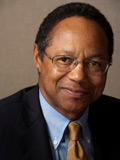 Duke Health CEO's advice for young leaders: Take more risks
Duke Health CEO's advice for young leaders: Take more risks
Dr. Eugene Washington, Chancellor for Health Affairs at Duke University and President and CEO of Duke University Health System, talks about why he sees population health improvement as the system's "ultimate goal," his thoughts on the future of AMCs, and his phone-free approach to unwinding. Read our interview with Eugene.
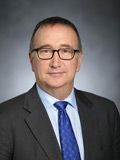 From basketball coach to CEO of a $5.5B health system: Where James Hereford is taking Fairview next
From basketball coach to CEO of a $5.5B health system: Where James Hereford is taking Fairview next
James Hereford, president and CEO of Fairview Health Services, talks about lessons learned on the ranch, a lifelong journey to "find the hard projects," and how 2017—which has already seen a health system merger, incorporation of a health plan, and negotiation of an academic medical group contract—is shaping up for Fairview. Read our interview with James.
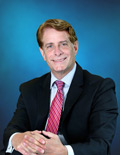 Can two CEOs co-lead? Bob Garrett and John Lloyd are showing how it's done.
Can two CEOs co-lead? Bob Garrett and John Lloyd are showing how it's done.
Bob Garrett and John Lloyd, co-CEOs of Hackensack Meridian, talk about their unique leadership structure, building a medical school for tomorrow's doctors, and what will headline Hackensack Meridian's press releases for 2022. Read our interview with Bob and John.
Don't miss out on the latest Advisory Board insights
Create your free account to access 2 resources each month, including the latest research and webinars.
Want access without creating an account?
You have 2 free members-only resources remaining this month remaining this month.
1 free members-only resources remaining this month
1 free members-only resources remaining this month
You've reached your limit of free monthly insights
Become a member to access all of Advisory Board's resources, events, and experts
Never miss out on the latest innovative health care content tailored to you.
Benefits include:
You've reached your limit of free monthly insights

